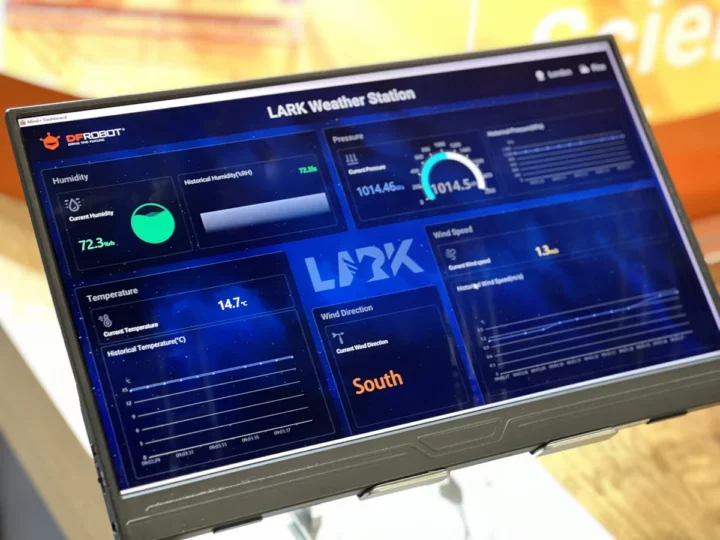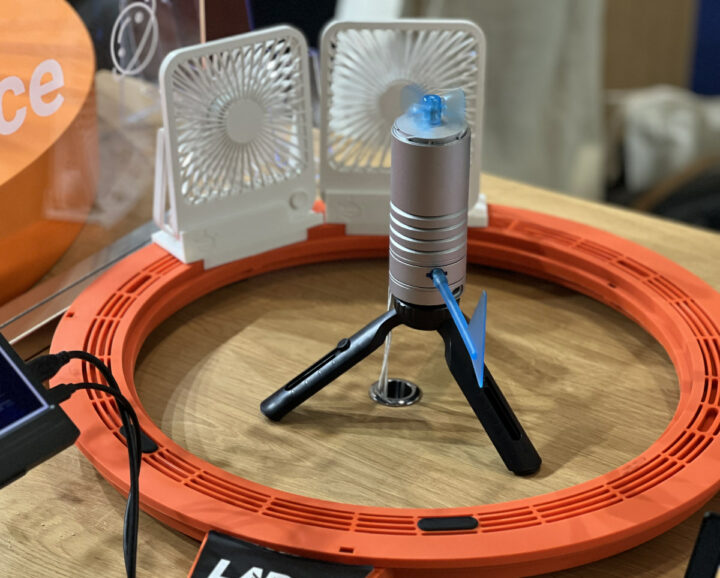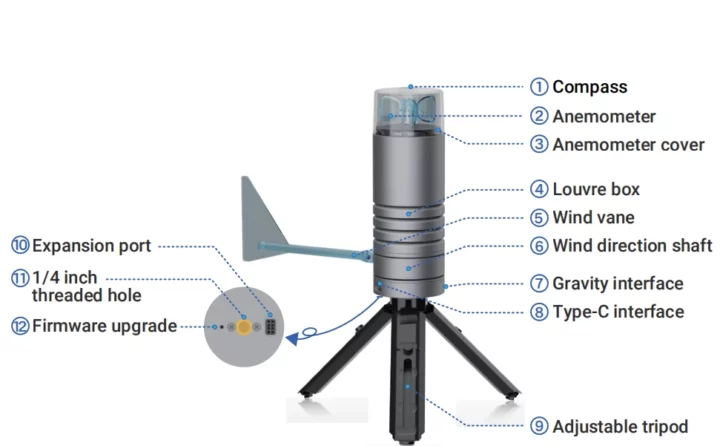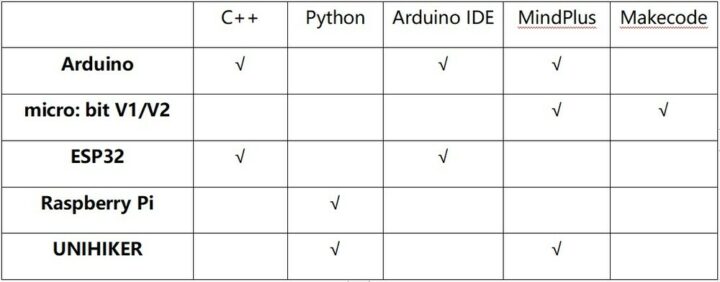The Lark Weather Station measures wind speed, wind direction, temperature, humidity, and air pressure through a range of sensors and connects to popular development boards such as Arduino UNO, ESP32, BBC micro:bit, Raspberry Pi, or DFRobot Unihiker through I2C or UART.
We’ve seen several projects for Internet-connection weather stations that retrieve weather data from the web and display the results locally, but the Lark Weather Station allows the users to get atmospheric data right in his/her current location thanks to its built-in anemometer, wind vane, and built-in sensors, as well as expansion interfaces for additional sensors.
Lark Weather Station specifications:
- Storage – 16MB flash good to store about 160 days of data (when data is recorded once per minute)
- Sensors
- Compass
- Anemometer
- Wind Speed: 0.5~12m/s
- Cover to protect the anemometer during storage/transport
- Wind vane and wind direction shaft to report the wind direction (eight directions)
- Temperature Range –20~60 ±0.2
- Humidity – 0~99%RH ±2%RH
- Air Pressure – 300~1100hPa ±1Pa
- Louvered box to ensure air circulation for temperature, humidity, and air pressure measurements
- USB – 1x USB-C port for configuration and CSV data export
- Host interface – Gravity interface with I2C/UART to connect to The Lark weather station to Arduino, ESP32, etc…
- Expansion
- 2x Gravity connector for additional sensors such as oxygen sensor, TVOC or PM2.5 air quality sensor, motion sensor, CO2 sensor, etc…
- 8-pin expansion port to connect a battery, GNSS module, and/or data transmission module
- Misc – Firmware upgrade pinhole
- Operating Voltage – 3.3 to 5.5V DC
- Operating Current – 40mA
- Sleep Current – 2mA
- Dimensions – 160x55mm; 1/4-inch thread hole for mounting to a tripod
- Weight – 270g
The Lark weather station can be programmed with C++, Arduino, Python, Mind+, or Makeblock and support various hardware platforms such as Arduino boards, ESP32 modules and boards, Raspberry Pi SBCs, BBC Micro:bit, and Unihiker IoT platform as shown in the table below. You’ll find more technical details and instructions for each platform and language in the wiki. I can’t find any way to measure rain’s precipitation rate with the Lark kit, so that’s a potential downside to the system.
DFRobot first showcased the Lark Weather Station at the BETT 2024 exhibition last January showing a pretty neat interface leveraging a UniHiker board sending data over MQTT and then displayed on the Mind+ dashboard as shown below.

DFRobot is selling the Lark weather station for $149.00 plus shipping with a USB Type-C/Micro USB dual-purpose data cable, a 4-pin Gravity I2C/UART cable, an adjustable tripod, and a tripod. This type of Arduino-compatible weather station is not unique, as we previously covered the Sparkfun ESP32-based “Arduino IoT Weather Station”, and for people who just want to monitor weather data without programming the system themselves, I can see some complete kits from Sainlogic or Logia with a display going for a little above $100 on Amazon.

Jean-Luc started CNX Software in 2010 as a part-time endeavor, before quitting his job as a software engineering manager, and starting to write daily news, and reviews full time later in 2011.
Support CNX Software! Donate via cryptocurrencies, become a Patron on Patreon, or purchase goods on Amazon or Aliexpress







